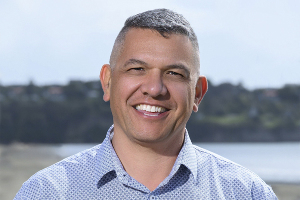
Getting inflation back to sustainable levels won’t be easy and more work is required by the Reserve Bank to achieve this goal within a reasonable timeframe, says Kelly Eckhold, Westpac’s chief economist.
The key questions are how easy will it be to bring inflation back inside the RBNZ’s 1% to 3% target range, and will the economy slow sufficiently to allow this to happen?
“Inflation has already been outside the target range for almost two years, and our projections indicate it’s going to take another 18 months to get inflation back within the band,” Eckhold says.
“The economy likely won’t slow as much as we feared a few months back.”
Net migration has rebounded faster than expected and population growth is set to rise to its highest level in decades. “The world is back on the move after a few years of hunkering down, and New Zealand is one of the places where people want to come live and work,” he says.
“New entrants will bring valuable skills and experience to a labour market crying out for workers, but this will also bring demand that will offset some of the impact rising interest rates are having.”
Eckhold says none of this takes away from the point that the interest rate cycle is mature and the peak in interest rates is near. “The extra bit of work we think is required is very much in the vein of a stitch in time saves nine.”
Household finances in the vice
Turning to the economy overall, Eckhold says the major factor squeezing household finances and weighing on economic growth is the large rise in debt servicing costs.
While widespread mortgage rate fixing did insulate many borrowers from the impact of those increases for a period, large numbers of mortgages have now rolled on to higher interest rates.
Accounting for the extent of interest rate fixing, Eckhold estimates the average ‘effective’ mortgage rate New Zealand borrowers are actually paying has increased by about 120 bps since early 2022.
About 50% of all fixed rate mortgages will come up for repricing over the year ahead, and the average mortgage rate is set to rise by a further 150 bps by early 2024.
“That will see the average household’s spending on interest costs increasing from about 5% of their disposable income in 2022 to 10% in 2024, and some borrowers will face much larger increases,” Eckhold says.
Higher interest rates along with rising living costs will drain a large amount of cash out of households’ wallets. That means many households will have to wind back spending over the coming year.
House value trough
In addition, it’s looking like a trough in the housing market is approaching faster than previously anticipated.
Since mortgage rates began rising in 2021, house prices have fallen 17% on average across the nation. However, rising population growth along with lower longer-term mortgage rates are likely to provide a brake on those declines, Eckhold says.
“We’ve revised up our forecasts for house price growth, and now expect that mid-2023 will be the bottom for the housing market.
“As interest rates are set to remain at contractionary levels for some time, we think the extent of the upswing should be limited – although this crucially also depends on the future path of migration, which we expect will rise to an annual inflow of 100,000 people by the end of this year.”
That sharp rise will see population growth rising from just 0.5% at the end of 2022 to 2.4% by the close of this year. That will be the fastest rate of population growth New Zealand has seen in decades, and it signals a large increase in many businesses’ demand base.
Eckhold says the impact of this is likely to be most pronounced for those businesses selling fast moving consumer goods like groceries. However, it will also add to demand for a range of other consumer goods and services.




Comments
No comments yet.
Sign In to add your comment